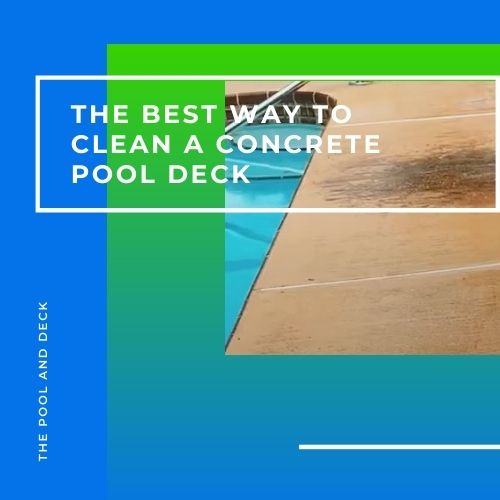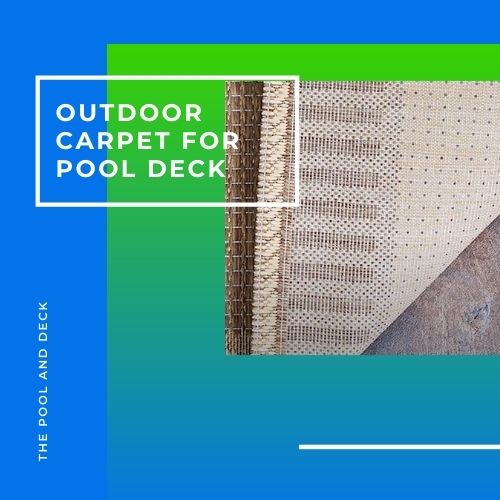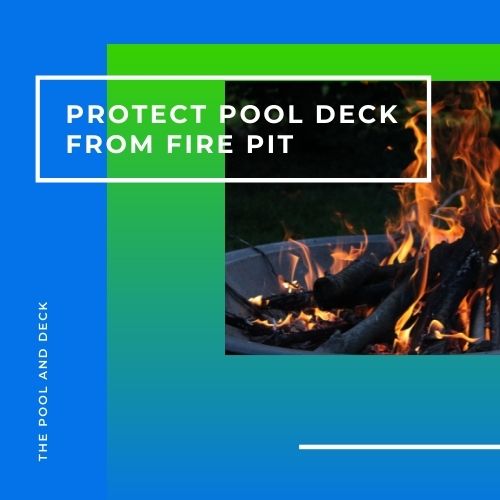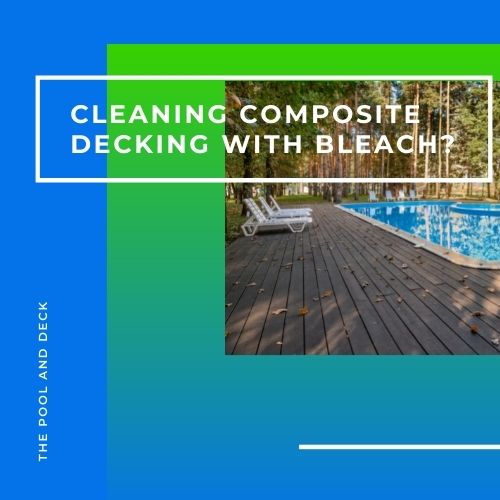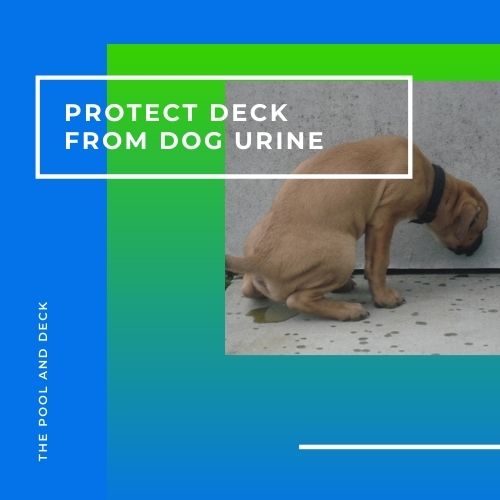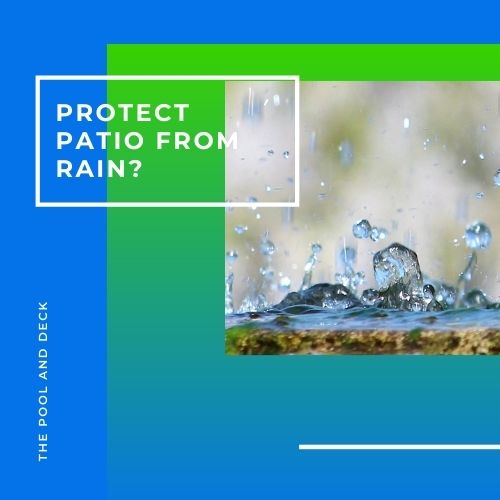How to Best Protect Wood Deck from Ice Melt?
thepoolanddeck.com is a participant in the Amazon Services LLC Associates Program, an affiliate advertising program designed to provide a means for sites to earn advertising fees by advertising and linking to Amazon.com . The website is also an affiliate of a few other brands. The affiliate links never increase your purchase price. We do appreciate your support. Thank you very much!
Table of Contents
Does Ice Melt Damage Wood Decks?
Spring and summer are the best months when you have a pool and a pool deck in your backyard. You get to enjoy quality time, outdoors, with your family & friends. But if you live where winter temperatures dip below freezing then you have to worry about stuff like, “Does ice melt damage wood decks”? Can you protect wood deck from standard ice melt?
Wood is porous & hygroscopic. Ice melt containing common salt will wick into the wood fibers of the deck. Later when the wood dries, the salt within the wood will crystallize, push the fibers apart and give the wood a “fuzzy” appearance. The wood deck will start showing signs of cracking & warping too.
Salt, when dissolved in water, will also accelerate the corrosion of concrete and metal. The salt creates an electrolyte solution, which promotes the flow of electrons from one electrode to another.
Since wood decks use metal nails & screws and may be sitting on a concrete slab, standard ice melts are damaging to a wood deck, in more ways than one.
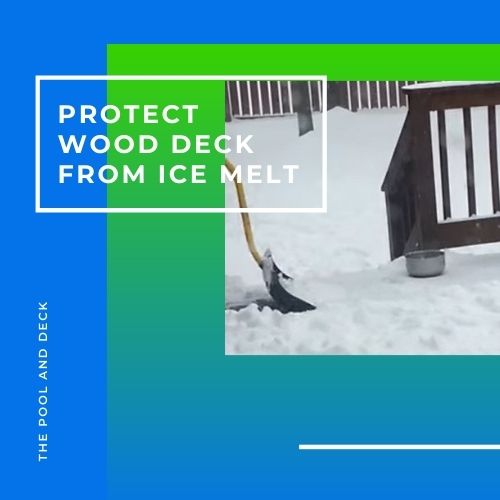
So if you have a wood deck then avoid using salt based ice melts, such as common salt or rock salt. Salt is not wood safe ice melt. Protect your wood deck from damage by not using common salt based ice melt.
What Causes Snow to Turn into Ice?
To begin with, your wood deck gets covered in snow not ice. Snow is when the water vapor in the atmosphere freezes and falls to earth. It is soft, fluffy and beautiful. Ice is formed when water, such as in a lake, freezes. It is hard, slippery and dangerous.
Snow can turn to ice under pressure, extreme cold, or both. Let snow sit on your deck and sooner or later it will solidify into ice. Relatively speaking, it is much easier to get rid of snow than to get rid of ice.
So, if you can clear the snow from your wood deck before it gets a chance to turn into ice, you would not have to use an ice melt at all. In other words, to best protect your wood deck from ice melt, clear the snow from the deck before it has a chance to turn to ice.
Should Snow Be Removed from Deck?
Snow sitting on your deck may not really damage it, but leaving it there is not helping either. You may not have the time or just feel lazy about shoveling snow off your deck, but the longer it sits there the harder it gets.
Ice anywhere, including a wood deck, is inviting you to slip and fall. By clearing the snow off the wood deck as soon as possible, you will
- Reduce the risk of slips & falls
- Avoid or reduce use of ice melt
- Reclaim the deck for yourself & your pets
So, yes, snow should be removed from wood decks as regularly as possible. Some of the do’s and don’ts when removing snow from your wood deck:
- Use a broom to push the snow off the deck
- Even a leaf blower will work if the snow is quite light. Check out EGO Power+ LB6504 Lithium-ion Cordless Leaf Blower
- If the snow is quite deep, use a plastic (not metal) shovel to prevent scratches
- Do not use salt ice melts
- Do not use sand to increase traction. Sand will scratch wood
What Kind of Ice Melt Is Safe for Wood Decks?
Removing snow from your wood deck, as often as possible, will certainly help in reducing ice formation. But it will not eliminate it. Sometimes the amount of snowfall can be just overwhelming and you may not have the time or the energy to shovel it off.
To protect your wood deck from ice formation, you should spread ice melt on the deck ahead of a snow storm, if you can. After the snowfall you can spread some more on the top. This way the ice melt is able to work on the snow from both ends.
Sodium Chloride Ice Melt
Salt (Sodium Chloride) ice melts are the most damaging for wood for reasons explained above. You should protect your wood deck by not using rock salt or other salt based ice melts.
Calcium Chloride Ice Melt
Calcium Chloride is also damaging, though less damaging than Sodium Chloride. Do not use Calcium Chloride if you have a cedar or spruce wood deck. The calcium chloride can penetrate into wood surfaces resulting in premature deterioration.
Magnesium Chloride Ice Melt
Magnesium chloride is a wood safe ice melt that is gentler on the wood deck as well as safe for your kids & pets.
Check out Green Gobbler Pet Safe Magnesium Chloride Ice Melt PelletsKEY FEATURES:
- Melts Snow and Ice in Frigid Temperatures (As Low as -10°F)
- Magnesium Chloride Formula (Harvested from the Dead Sea) Has Low Toxicity
- Safer for Pets and the Environment
- Perfect for Spreaders Due to Its Small, Round Pellet Shape
Salt & Chloride Free Ice Melt
Most ice melts are ultimately chloride salts of metallic elements such as sodium, calcium, potassium and magnesium. It is true that magnesium chloride ice melt is less damaging than calcium chloride ice melt, which, in turn, is less damaging than sodium chloride (rock salt) ice melt.
But for a real wood-safe and pet safe ice melt you have to choose something that is not a chloride at all. Safe Paw lists its main ingredient as Modified Carbonyl Diamide Crystals.
Check out Safe Paw Salt and Chloride Free Ice MeltSPECIAL FEATURES
- 100% Salt & Chloride Free.
- Guaranteed to Melt at Low Temperatures (-2°F)
- People & Pet Safe – Non-Toxic and Biodegradable
- Non-Corrosive – Does Not Damage Delicate Surfaces
- Excellent Spread Rate
Thank you very much for reading the post. I do hope you found it informative and helpful.

